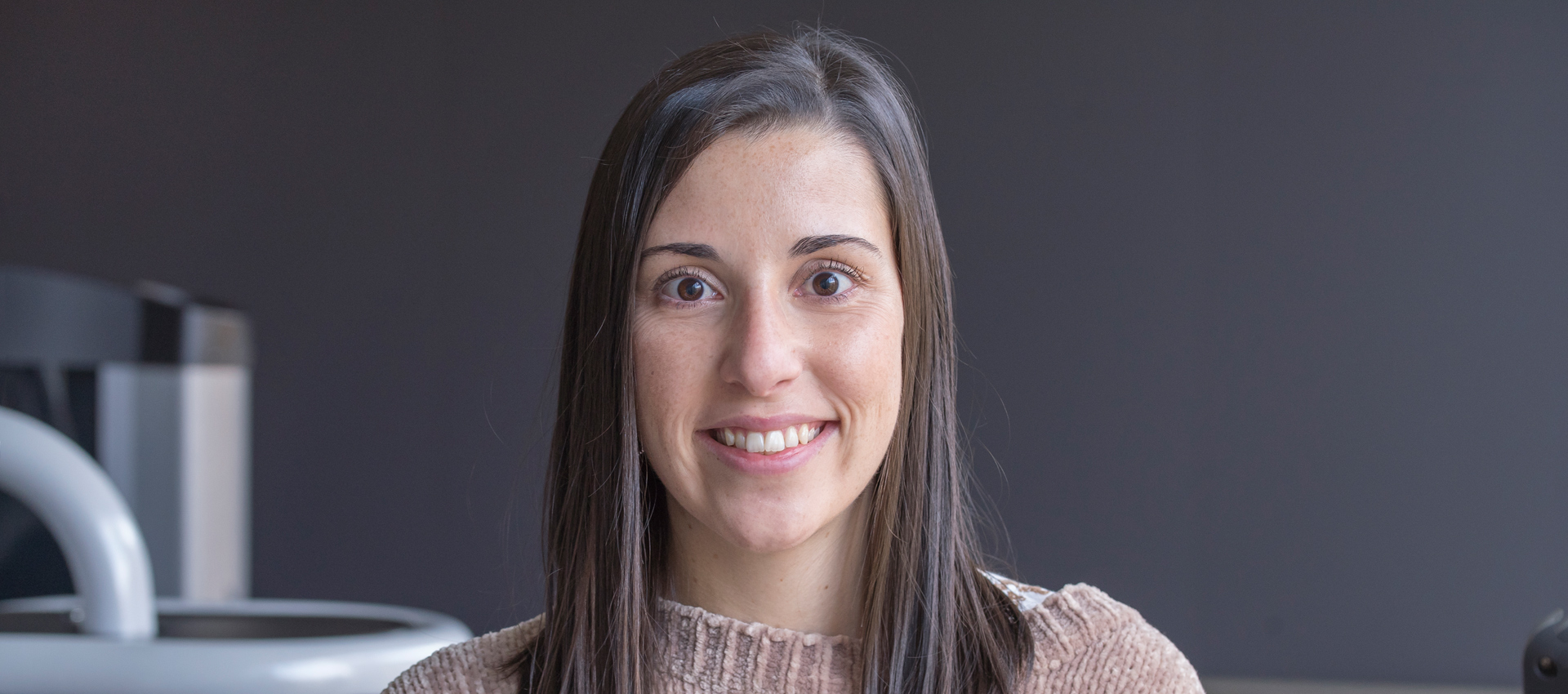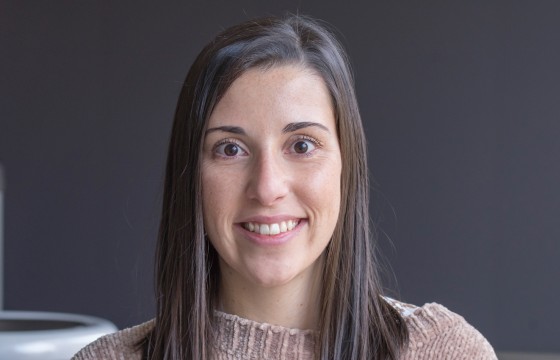
Yesenia García will defend her doctoral thesis on Thursday, June 1st
Yesenia García Alonso, a predoctoral researcher from the Unit of Exercise, Health, and Quality of Life (E-FIT) at Navarrabiomed-IdiSNA, will present her doctoral thesis at the Public University of Navarra on Thursday, June 1st, at 10:00 a.m., in Classroom 25 of the Faculty of Health Sciences at UPNA.
This thesis, entitled “Relationship between physical fitness, body composition indicators, and components of physical activity in Spanish schoolchildren” has been carried out at Navarrabiomed under the supervision of Dr. Mikel Izquierdo, principal investigator of the Unit of Exercise, Health, and Quality of Life (E-FIT), Dr. Alicia Mª Alonso, professor and researcher in Physical Activity Sciences and Sports at UPNA, and Dr. Antonio García-Hermoso, principal investigator of the Unit of Child and Youth Physical Activity at Navarrabiomed.
The research aims to understand the relationship between the physical fitness of schoolchildren in the early education stage and some healthy habits. The aim of the studies conducted is to promote healthy habits, reduce sedentary behavior, and encourage an increase in the quantity and quality of physical activity among children.
Development of the research and results
This doctoral thesis is based on a longitudinal research project conducted by the Unit of Exercise, Health, and Quality of Life (E-FIT) called the “Physical Activity Observatory in School-age Population” carried out by UPNA and Navarrabiomed. As a result of this project, four studies have been conducted and published in international scientific journals, which form the four chapters of this work.
The first study examines the effects of COVID-19 confinement on physical activity, sedentary behavior, sleep, and emotional self-regulation. In the second study, the main objective was to compare levels of physical activity, sedentary behavior, and sleep duration in boys and girls before and during the COVID-19 pandemic, to determine the association between changes in moderate-to-vigorous physical activity and total physical activity, sedentary behavior, and sleep time between parents and their children. The third study evaluated the association between components of physical fitness and muscle ultrasound parameters in prepubertal children. The last study aimed to establish percentile curves for ultrasound parameters of echo intensity, muscle thickness, and subcutaneous adipose tissue of the rectus femoris in children aged four to eleven with no underlying metabolic disease, in order to establish ranges of normality.
Among the results obtained, it is noteworthy that physical activity and sleep are related to self-regulation problems during confinement. Preschoolers who met the physical activity recommendations proposed by the World Health Organization (WHO) during the COVID-19 quarantine had lower internalization scores compared to those who did not meet the recommendations. In other words, they exhibited lower levels of shyness, fears, phobias, sadness, worry, etc. On the other hand, it can be concluded that health-related physical activity (moderate-to-vigorous physical activity) has not been affected by confinement: preschoolers engage in more moderate-to-vigorous physical activity, are more sedentary, and sleep fewer hours than before the COVID-19 pandemic. These behaviors seem to be associated with their mother’s behavior. It has also been found that components of physical fitness are related to higher muscle quality and lower intramuscular and subcutaneous fat. Finally, the ranges of echo intensity, cross-sectional area, muscle thickness, and subcutaneous adipose tissue thickness values for the rectus femoris in children aged 4 to 11 are normal for each age and gender.
Funding and Dissemination of Results
The work presented has been funded by the Department of Education of the Government of Navarra through the Call for Research Projects in Educational Centers 2019.
Additionally, it has led to several scientific publications: in 2021, in the International Journal of Environmental Research and Public Health, “Physical Activity, Sedentary Behavior, Sleep, and Self-Regulation in Spanish Preschoolers during the COVID-19 Lockdown”; in 2022, in the journal Pediatric Obesity, “Relationship between Parents’ and Children’s Objectively Assessed Movement Behaviors Prior to and During the COVID-19 Pandemic”; in 2022, in the International Journal of Obesity, “Associations between Physical Fitness Components with Muscle Ultrasound Parameters in Prepuberal Children”; and in 2023, in Frontiers in Nutrition, “Centile Reference Curves of the Ultrasound-Based Characteristics of the Rectus Femoris Muscle Composition in Children at 4-11 Years Old” (currently under review).
Furthermore, the results have been disseminated at the 7th EXERNET Symposium (Spanish Network of Research in Physical Exercise and Health) in 2021, held in Cuenca, where two posters were presented: “Association between Physical Fitness Components and Muscle Quality in Spanish Children” and “Physical Activity, Sedentary Behavior, and Sleep in Preschoolers Before and During the COVID-19 Pandemic: The Role of Families.”
Caption:
Yesenia García Alonso, predoctoral researcher from the Unit of Exercise, Health, and Quality of Life (E-FIT) at Navarrabiomed-IdiSNA.


